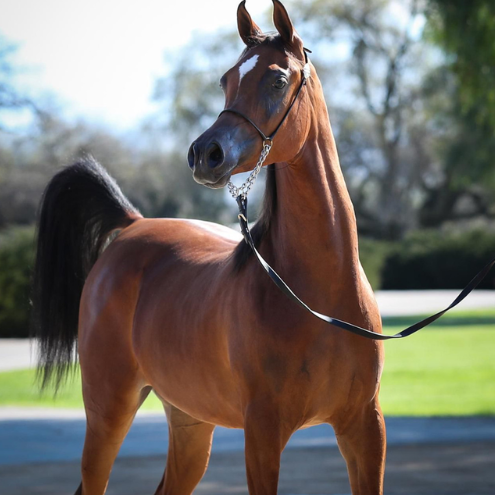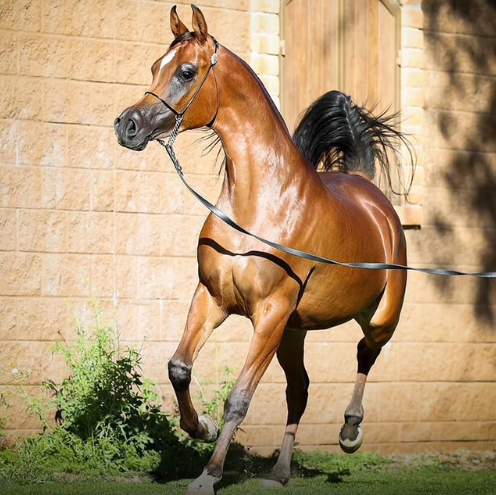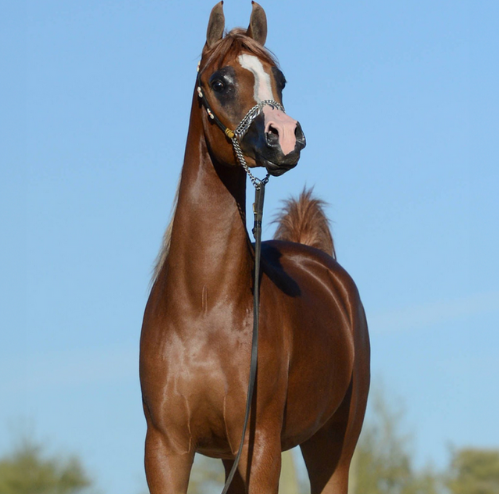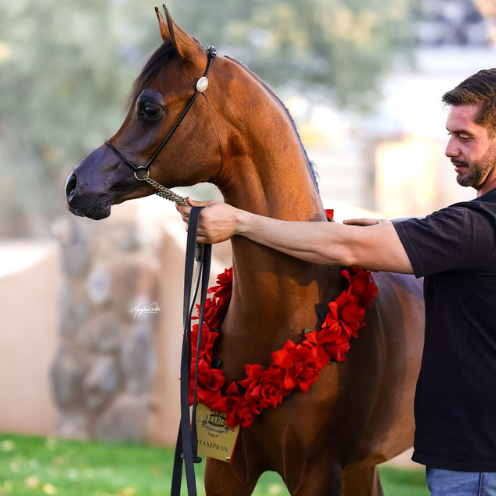Arabian Horse Care & Feeding Guide
The Arabian horse is one of the most naturally efficient and resilient horse breeds in the world. Bred for centuries in harsh desert conditions, Arabians evolved to thrive on minimal feed, retain hydration, and maintain excellent muscling without heavy grain or rich pasture.
While Arabians are relatively low-maintenance compared to larger breeds, they still require proper care, balanced nutrition, mental stimulation, and regular handling to remain healthy and happy. This guide covers feeding, grooming, hoof care, stabling, conditioning, and overall wellness — ideal for both new and experienced owners.
Understanding the Arabian’s Desert Metabolism
Unlike heavy-bodied breeds, Arabians have a naturally efficient metabolism. They were bred to survive long distances with limited forage, which is why:
• They require less grain than most horses of similar size
• They do best on high-quality forage + balanced vitamins/minerals
• Overfeeding can lead to weight gain, insulin issues, or metabolic stress
Arabians are easy keepers, meaning they maintain weight well — a benefit when fed correctly and a risk when fed too much.
Ideal Feeding Plan for an Arabian Horse
A healthy adult Arabian typically needs:
Forage (Hay/Pasture):
✔ 1.5–2% of body weight daily (average 12–18 lbs per day)
✔ Grass hay, timothy, orchard, or mixed alfalfa depending on workload
✔ Slow feeders recommended for natural grazing behavior
Concentrates / Grain (if needed):
✔ Only for performance horses, seniors, or underweight horses
✔ Choose low-starch, high-fiber feeds
✔ Avoid high-sugar sweet feeds
Supplements (optional):
✔ Omega 3 for coat & joints
✔ Electrolytes for endurance horses
✔ Vitamin E & selenium if no pasture access
✔ Pre/probiotics for gut health
Fresh Water:
✔ Minimum 10–15 gallons per day
✔ Arabians tend to drink less but sweat more — hydration matters
Because Arabians burn fuel efficiently, feeding should be based on workload and body condition, not automatic grain schedules.
Body Condition & Weight Management
Arabians can appear leaner than stock breeds due to their short backs, flat croups, and refined necks — which is normal.
Ideal Arabian condition includes:
• Soft but visible muscling
• No ribs showing, but easily felt
• Slim throatlatch, no cresting
• Smooth back, no sharp spine
• Moderate hindquarter definition
Overweight Arabians are more likely to develop:
✘ Insulin resistance
✘ Laminitis
✘ Joint strain
✘ Low energy & discomfort
Regular body scoring and weight checks help prevent problems early.
Hoof & Leg Care
Arabians typically have strong, dense hooves due to desert breeding, but they still require:
✔ Farrier every 5–7 weeks
✔ Balanced trims, no long toes
✔ Proper angles for endurance or sport work
✔ Regular inspection for chips, cracks, or thrush
Many Arabians perform barefoot successfully, especially for trail and light arena work.
Grooming & Coat Care
Arabians are known for their fine skin, silky coat, and expressive faces — all of which benefit from regular grooming.
Daily Grooming Essentials
• Soft curry or grooming glove
• Body brush to bring up natural oils
• Face brush for the refined head
• Detangler for fine mane/tail hair
Clipping & Show Prep
• Arabians often have their bridle path clipped long
• Face clipping enhances head type
• Coat shines best with elbow grease, not spray
Because Arabians are naturally clean, they stay show-ready with minimal effort compared to heavier breeds.
Exercise & Conditioning
Arabians stay mentally and physically sound when given consistent movement.
Best Arabian conditioning activities:
✔ Trail riding
✔ Arena work in balance
✔ Endurance conditioning (intervals, hills)
✔ Liberty play / mental engagement
✔ Cavaletti for topline and rhythm
They do not require intense force-based training — they respond best to clarity, softness, and variety.
Stabling & Environment
Arabians are highly social and thrive with:
✔ Turnout whenever possible
✔ Companionship (horses, goats, donkeys, etc.)
✔ Shelter from wind/sun, not necessarily a closed stall
✔ Visual interaction — they dislike isolation
A bored Arabian becomes anxious, vocal, or mouthy — mental stimulation is as important as feed.
Health Maintenance Checklist
| Care Area | Frequency |
|---|---|
| Vet wellness exam | 1–2x per year |
| Vaccinations | As recommended by vet |
| Dental float | Every 6–12 months |
| Farrier trim | 5–7 weeks |
| Deworming | Based on fecal test |
| Weight check | Monthly |
| Saddle fit evaluation | Every 6–12 months |
Arabians age gracefully — many live and ride actively into their late 20s.
Why Proper Care Preserves the Arabian Legacy
When fed, trained, and handled correctly, the Arabian horse is one of the easiest and most rewarding breeds to manage. Their intelligence, efficiency, and loyalty make them ideal companions for riders who want a horse that offers partnership rather than resistance.
A well-kept Arabian is more than beautiful — it is a living continuation of a 4,000-year-old heritage.
Contact Us for Inquiries or to Schedule a Visit
Whether you are searching for a future show prospect, a foundation mare, or a lifelong companion, we are happy to answer questions, share pedigree details, or help guide you toward the right Arabian horse.
Phone: (630) 215-5545
Email: alameerastable@gmail.com
Location: 24224 S 88th Ave, Frankfort, IL 60423
Visiting Hours: By appointment only
INTERNATIONAL INQUIRIES WELCOME
Explore More Arabian Horse Guides
Arabian Horse Guide (Main Page)
History of the Arabian Horse
Arabian Horse Bloodlines & Types
Arabian Horse Temperament & Intelligence
Arabian Horse Care & Feeding Guide
Arabian Horse Training & Performance Disciplines
Arabian Horse Breeding & Bloodlines Overview
Arabian Horse Conformation & Anatomy
Arabian Horse Prices & Buying Guide
Arabian Horse Registration & Pedigree Papers Explained
Arabian Horse Endurance & Athletic Ability




